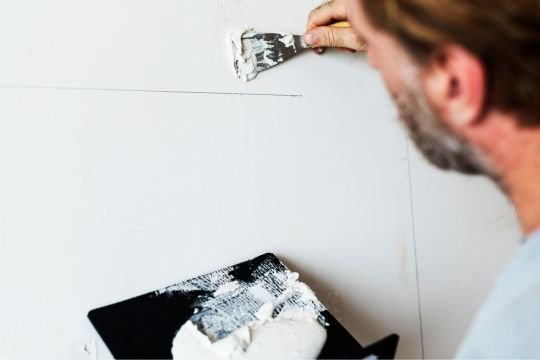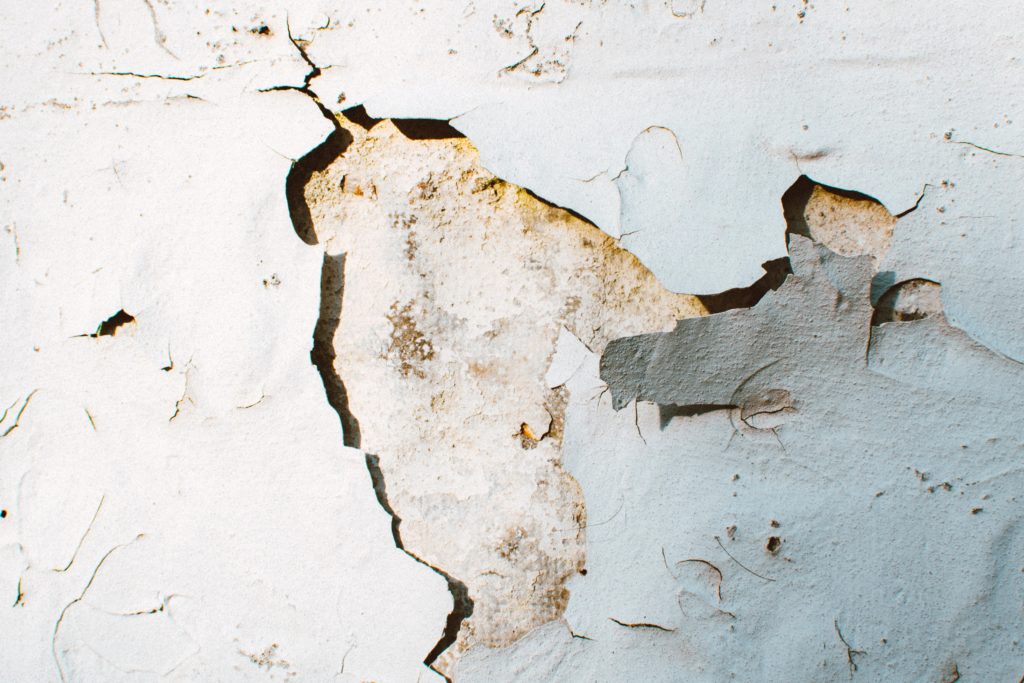Have you noticed cracks in your walls and ceilings? If so, don’t ignore them. Wall and ceiling cracks may seem like a minor cosmetic problem, but if not treated properly, they can cause serious damage to your home. In this article, we’ll help you identify the different types of cracks, understand their causes, show you how to repair them and give you tips on how to avoid future problems.
Wall cracks
- The appearance of cracks in walls is a common problem that can occur at any time. It is important to treat the crack quickly to prevent water, dirt or even structural damage to the wall. Fortunately, crack repair is a relatively simple task that can be done as a DIY job with the right tools and products. First, it is important to determine the nature of the crack and its size.
- Small surface cracks are easy to repair and usually only need to be repaired with a patching compound or ready-made acrylic. Larger or structural cracks may require the help of a masonry professional. For small cracks, the repair process begins by cleaning the area. Use a scraper or spackle knife to remove any debris, then dust the area. If the crack is superficial, use filler to fill the crack. Use a spatula or triangular putty knife to apply the filler or sealant, making sure to fill the crack. Allow to dry completely, then sand lightly with fine-grained sandpaper to smooth the surface.
- For larger cracks, use levelling compound to fill the crack. Apply a first coat with a trowel, making sure to fill the crack. Wait for this to dry, then apply a second coat. Allow to dry completely, then sand the area with fine-grained sandpaper to smooth the surface. In some cases, a strip of calico can be used to reinforce the repair. Apply adhesive to the area around the crack and then place the calico strip on top, making sure to smooth the edges.
- For cracks caused by ground movement or other structural problems, it is recommended that a masonry professional be called in. They will be able to assess the situation and recommend the best ways to repair the crack. After repairing the crack, you can apply a coat of paint or plaster to cover the area and make it look even. Remember to use an undercoat if necessary.
In conclusion, repairing cracks in walls is a relatively simple task that can be done as a DIY job. However, for larger or structural cracks, it is recommended to call in a professional. By working carefully and using the right tools and products, you can quickly restore your wall to its original condition and avoid future problems of water ingress or deterioration.


Ceiling cracks
It is not uncommon to find cracks in the walls and ceilings of our houses or flats. Although it may seem like a minor problem, cracks can affect the structure of the house if they are not treated properly. Ceiling cracks are particularly annoying as they can cause considerable damage if not repaired quickly. So here are some tips to help you fill in ceiling cracks.
First of all, it is essential to determine the cause of the cracks. Cracks can be caused by structural problems such as unstable foundations, settlement or ground movement. However, in most cases, cracks are caused by natural movement due to changes in temperature and humidity or minor movements of the house. If you notice cracks in your ceiling, first check for cracks in the walls or floor. If not, it is probably a minor problem that can be easily fixed.
The first step in filling a ceiling crack is to prepare the surface. Scrape off any flaking paint or plaster with a scraper or plaster knife. Then clean the surface with a damp sponge to remove dust and debris. Make sure the surface is completely dry before applying the plaster. Next, apply a filler to the crack using a filler knife. Spread the filler in a thin layer, ensuring that it covers the crack well. Use a trowel or spatula to smooth the plaster and remove excess material. Allow the plaster to dry according to the manufacturer’s instructions. This will usually take a few hours. If you have small cracks to repair, you can use a levelling compound to achieve a smooth, even surface. Once the filler has dried, lightly sand the surface with fine sandpaper to remove any irregularities and to ensure that the surface is smooth and even. Once you have finished filling, you can apply an undercoat to seal the plaster. The undercoat will also allow the paint to adhere better to the surface. If you want to paint the ceiling, make sure you use a water-resistant acrylic paint. It is important to note that the drying time of the coating will vary depending on the weather conditions and the type of product used. Be sure to follow the manufacturer’s instructions to ensure that the coating is completely dry before applying the paint.
Finally, it is important to understand that filling cracks in the ceiling can be a tedious and difficult job, especially if the cracks are large or the result of a structural problem. If you are not comfortable with this type of DIY or are unsure of the cause of the cracks, it is best to call in a professional to carry out the repairs.
Types of cracks
There are several types of cracks that can appear in walls and ceilings. The most common are
Shrinkage cracks
These cracks appear when the building material, such as plaster, shrinks as it dries.
Expansion cracks
These cracks occur when building materials expand due to changes in temperature and humidity.
Movement cracks
These cracks appear when the foundation of the house moves due to poor construction, unstable ground or an earthquake.
Structural cracks
These cracks are the most serious and may indicate a structural problem with your home.
Reasons why cracks occur
Cracks can be caused by several factors. Here are some of them:
- Normal aging: Over time, building materials can deteriorate and crack.
- Poor installation: If building materials are not properly installed, cracks can occur.
- Unstable ground: if the house is built on unstable ground, cracks may appear as the ground moves.
- Earthquakes: Earthquakes can cause cracks in houses.
- Unstable ground: if the house is built on unstable ground, cracks may appear as the ground moves.
- Poor installation: If building materials are not properly installed, cracks can occur.
Wall and ceiling cracks can be a sign of minor or major problems with your home. By being vigilant and treating cracks quickly, you can avoid more serious problems in the future. If you have cracks in your walls and ceilings, don’t hesitate to consult a professional to help you treat them properly.

